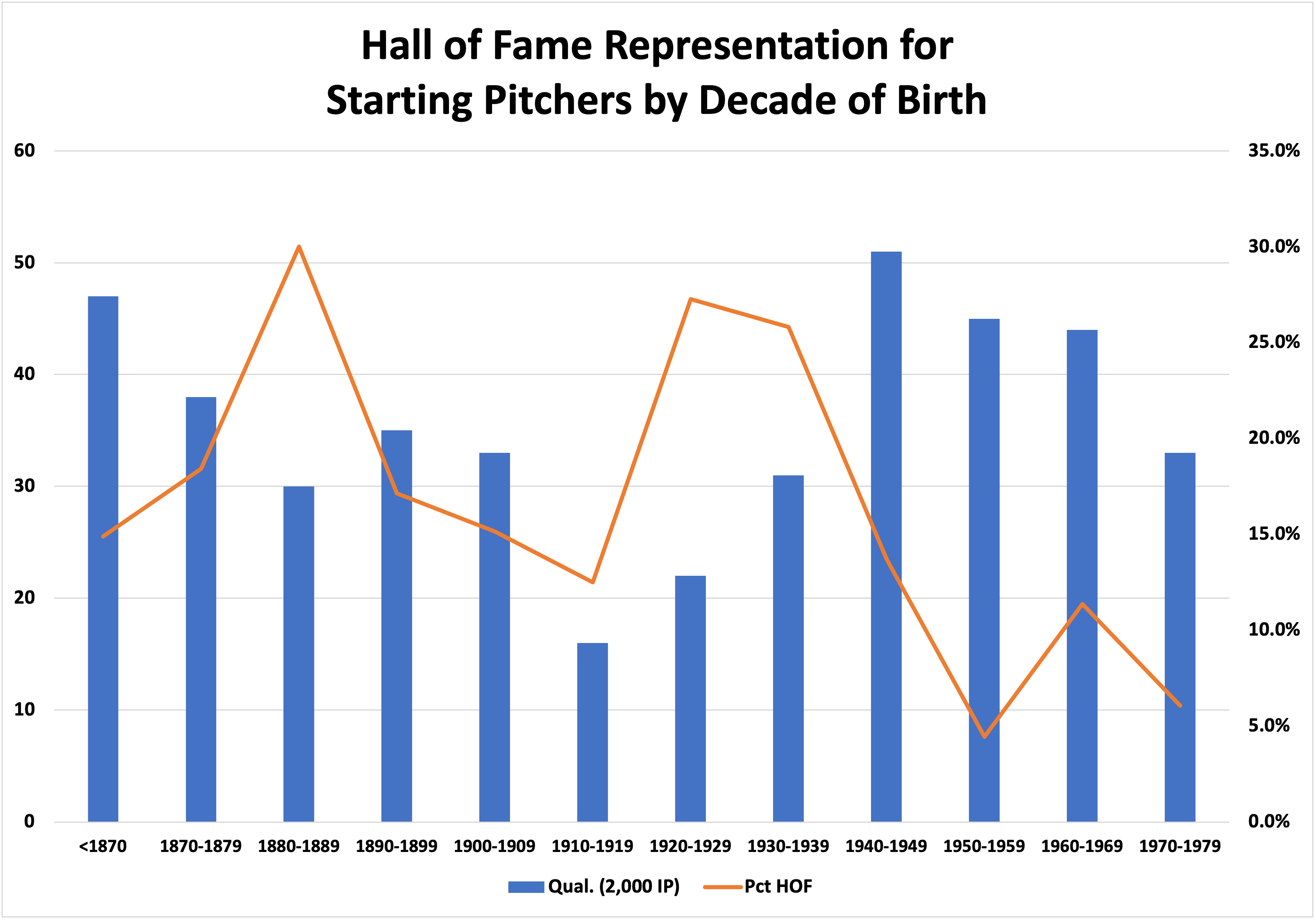Cooperstown Notebook: The Best of the Unenshrined Starters, Part 1

Our story so far: It is a dark time for recognizing Hall of Fame starting pitchers. While the 300-wins-or-bust barrier has fallen, starters born in 1950 or later have become significantly underrepresented in Cooperstown. The cream of the crop within that demographic has been honored, with a couple of notable exceptions whose own actions wounded their candidacies, causing them to age off the writers’ ballot. With falling workloads illustrating that the time of the 250-inning starter is behind us, it makes sense to reframe expectations for what constitutes a Hall-worthy hurler.
Enter S-JAWS, the experimental version of my Hall of Fame fitness metric, introduced during the past election cycle. As an attempt to reduce the skewing caused by the impact of 19th-century and dead-ball era pitchers, S-JAWS prorates peak WAR credit for any heavy-workload season to a maximum of 250 innings. The new metric — which is now the default at the starters’ Baseball Reference page — can help to illuminate some candidates throughout history who deserve a closer look even after being passed over so many times, though from a practical standpoint the oldest pitchers of the group could be a decade away from actual placement on an Era Committee ballot.
Before taking a breeze through those candidates — the part of this series many of you’ve been waiting for — here once again is the graphic summary of Hall of Fame representation rates for starting pitchers by birth decade, expressed as a percentage of “qualifiers” who reached 2,000 career innings. It’s a handy practical cutoff that includes every enshrined pitcher from the NL, AL, and bygone white leagues except Dizzy Dean (who fell 32.2 innings short), plus relievers Hoyt Wilhelm and Dennis Eckersley, who aren’t included in the counts of enshrined starters.

And here’s an aggregation of longer-term representation rates that I find most helpful:
| Birth Decade | Qual | HOF SP | Pct | WAR | Peak | Peak Adj. | JAWS | S-JAWS | Change | Peak Adj.% |
|---|---|---|---|---|---|---|---|---|---|---|
| <1900 | 151 | 29 | 19.2% | 73.5 | 53.6 | 38.4 | 63.6 | 56.0 | -7.6 | 72% |
| 1900-1929 | 71 | 13 | 18.3% | 67.5 | 45.9 | 40.6 | 56.7 | 54.0 | -2.7 | 88% |
| 1930-1949 | 82 | 15 | 18.3% | 73.7 | 48.1 | 41.4 | 60.9 | 57.6 | -3.4 | 86% |
| 1950-1979 | 122 | 9 | 7.4% | 80.7 | 48.5 | 47.5 | 64.6 | 64.1 | -0.5 | 98% |
| Total | 425 | 66 | 15.5% | 73.0 | 49.8 | 40.7 | 61.4 | 56.8 | -4.6 | 82% |
Before we dive in, I’ll note that there just aren’t enough eligible pitchers of quality that we can level the representation rates entirely. That isn’t even my goal here, but I am looking to boost the rates of more recent pitchers while keeping in mind that the somewhat looser standards make it apparent that a few guys from the more ancient eras look even stronger in the light of S-JAWS than in JAWS. We shouldn’t leave them by the wayside, but the staggered Era Committee process — with Early Baseball candidates (those who made their marks before 1950) not yet eligible for reconsideration before 2032, and Golden Days candidates (1950–69) not until 2027 — already defaults to making them lower priorities anyway.
With that, I’ll break this down into the top starters for each period who are outside the Hall, identifying those who fall within the top 100 of the rankings — about 43.0 S-JAWS, which captures shorter-career guys such as Félix Hernández, who’s an electoral longshot, to Sandy Koufax, who’s enshrined despite the brevity of his career. This is not to say that all of the pitchers on the outside that I’m highlighting here are Hall-worthy or that S-JAWS should be the only consideration for anointing them. The hope is that by appreciating what their candidacies do offer, we can come up with an appropriate list of pitchers whose elections should be prioritized. Read the rest of this entry »



